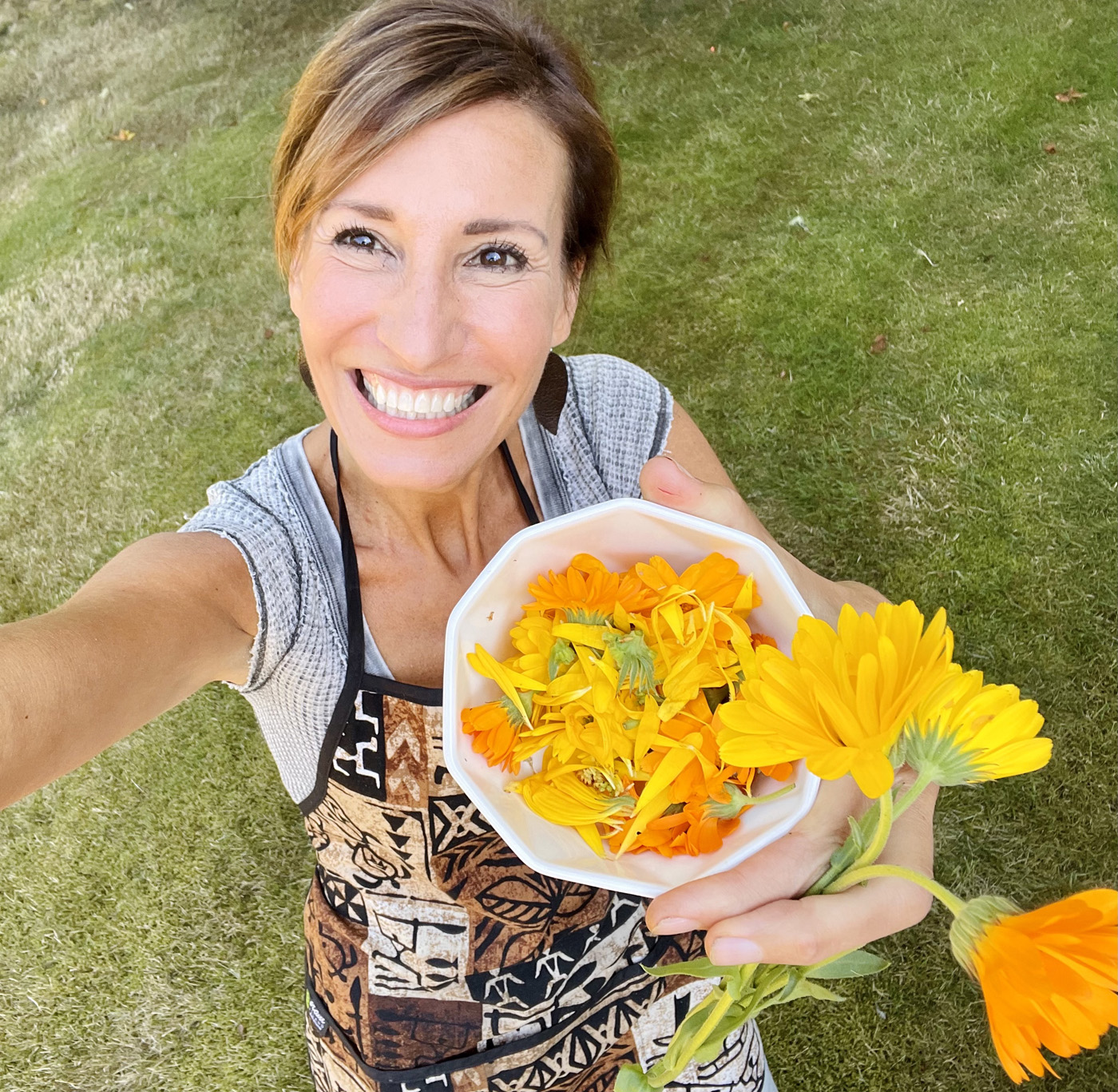Preparedness and Growing Herbal Medicine
During periods of uncertainty, it is not at all surprising that people have traditionally relied on knowledge passed down through the generations for survival. Even in the best of times, it is always a wise choice to be prepared as life can change in an instant. The current pandemic is one recent example of this. In our modern lives, survival knowledge has been all but lost for the average person.
This is why I encourage everyone to reacquaint themselves with time-honored methods that encourage self-sufficiency. And one of the best ways to begin is to cultivate a medicinal herb garden. Not only is it easy for beginners and seasoned gardeners alike, it will also give you peace of mind knowing that a bounty of natural medicine is just a few steps outside your door. The herbs can be harvested and used fresh or dried for later use in an emergency or during illness. These plants are not only useful, but beautiful as well! Let’s dig in and explore why everyone should have their own backyard pharmacy.
My Favorite, Easy-To-Grow Medicinal Plants
You can find each of the plants below in my Medicinal Seed Garden Kit.
If you live in the USA, this kit is for you!
Yarrow. One of the top herbs to keep on hand, yarrow really shines for a multitude of uses. It stops both internal and external bleeding — I experienced this firsthand on day 42 of the Alone show. I had cut my hand and it was a deep wound that most likely would have become infected. Luckily, I’d dried yarrow that I’d found nearby earlier in the season and packed it into the cut. The bleeding stopped within minutes and the wound healed exceedingly well due to the antibacterial properties of the plant. Additionally, yarrow can be used for bruises, sprains, dental pain, fevers, colds and the measles. Yarrow is such a powerful herb that I include in my All-Purpose (First Aid) Salve.
California Poppy. An excellent herb for calming the spirit and encouraging deep and rejuvenating sleep, California poppy is a mild sedative that works with the GABA receptors in the brain. It helps to soothe anxiety, nervous tension, PTSD, and spasms.
Peppermint. An exceedingly versatile herb, peppermint is helpful for gastrointestinal issues such as diarrhea, spastic colon, IBS, Crohn’s disease, and upset stomach. Peppermint oil diluted in a carrier oil and used externally relieves migraine headaches; neuralgia pain, sciatica, arthritis and muscle aches; and menstrual cramping.
Chamomile. My grandmother used to dip a clean cloth in chamomile tea and place it over swollen joints or irritated eyes. It is a calming herb that is helpful when taken as a tea for insomnia, asthma, muscle aches, headaches, eczema, allergies, stomach upset, and menstrual discomfort. It is also one of the herbs in my Sleep Blend.
Meadowsweet. This herb has fever-reducing, anti-inflammatory, and pain-relieving properties. It contains compounds that are similar to salicylic acid. You might know it as aspirin. Meadowsweet is useful for colds and influenza, arthritis, joint pain, bacterial infections, and UTI’s.
Chicory. Helpful for a wide range of physical discomforts, chicory is especially effective for aches and inflammation of the joints. Its bruised leaves can be used as a poultice for swelling. Chicory root is an outstanding antibacterial, antifungal, and anti-parasitic. It is used for malaria, liver and gallbladder disorders, diabetes, skin eruptions, and the root makes a great coffee substitute when roasted.
Echinacea. Over the twenty years of practicing herbalism, I have come to realize that the quality and effectiveness of homegrown medicinal herbs far outshine those you purchase in the store. And none is more evident than echinacea. This herb is exceptional for supporting the immune system and addressing urinary tract infections in both men and women. It is anti-inflammatory, antibiotic, antifungal, and antiviral. Use it as a preventative and treatment for colds and influenza. Echinacea is also helpful for snake and insect bites and stings when applied topically.
Evening Primrose. Our ancestors used this plant for the back, knees, shoulders, and joints. They’d take it first thing each morning and then would enjoy healthy mobility until the sun went down. Evening primrose also helps to balance female hormones, which is great news for those of you suffering from PCOS, PMS, and menopause. What’s more, it addresses asthma and allergies, gastrointestinal issues, diabetic neuropathy, as well as high blood pressure and cholesterol. I have a big patch of it in my garden and I think it should become a staple in yours too.
Calendula. An excellent herb to keep close at all times, calendula heals wounds, cuts, rashes, and skin issues. It also stimulates the immune and lymphatic system, promotes oral health, is antifungal, and soothes gastrointestinal complaints. I include it in my All-Purpose (First Aid) Salve.
Feverfew. One of the best botanicals you can use for reducing the severity and duration of migraine headaches, feverfew is also an outstanding anti-inflammatory and fever reducer. In fact, it is very similar to Ibuprofen in effectiveness — without the side effects of pharmaceuticals. With this kit, you will learn how to make your own “Anti-Migraine Tincture” with the feverfew growing right outside your door!
High-Quality Seeds Handpicked From the Very Best Stock
My Medicinal Garden Kit has no added chemicals, genetic modifications, or any other alterations. The seeds are open pollinated, non-GMO, heirloom, and grown/packaged in the USA. Even if you’ve never planted anything before, you’ll have no trouble growing the plants in this kit. Detailed instructions for planting, growing, and harvesting are included. You will also receive a guide that shows you how to turn your medicinal plants into tinctures, ointments, salves, poultices, decoctions, infusions, and essential oils.
If you live in the USA, try it and see!
I hope you enjoyed this list of 10 Medicinal Plants for your Backyard Garden. If you haven’t yet subscribed to my newsletter please do so now!
Nicole Apelian





